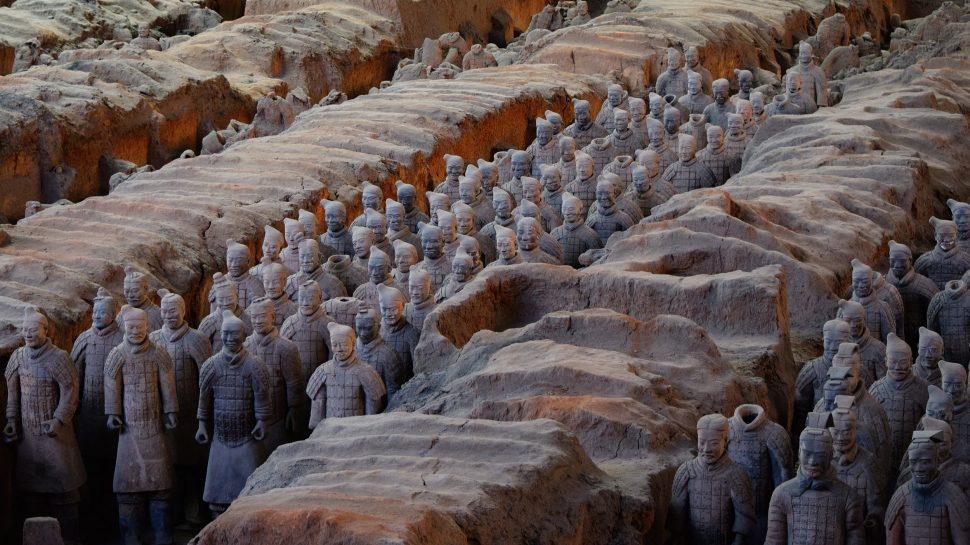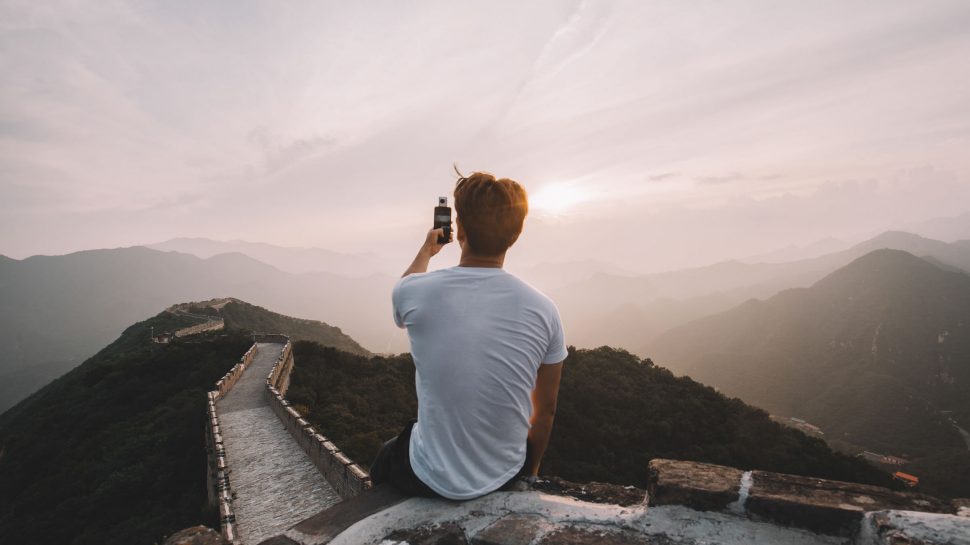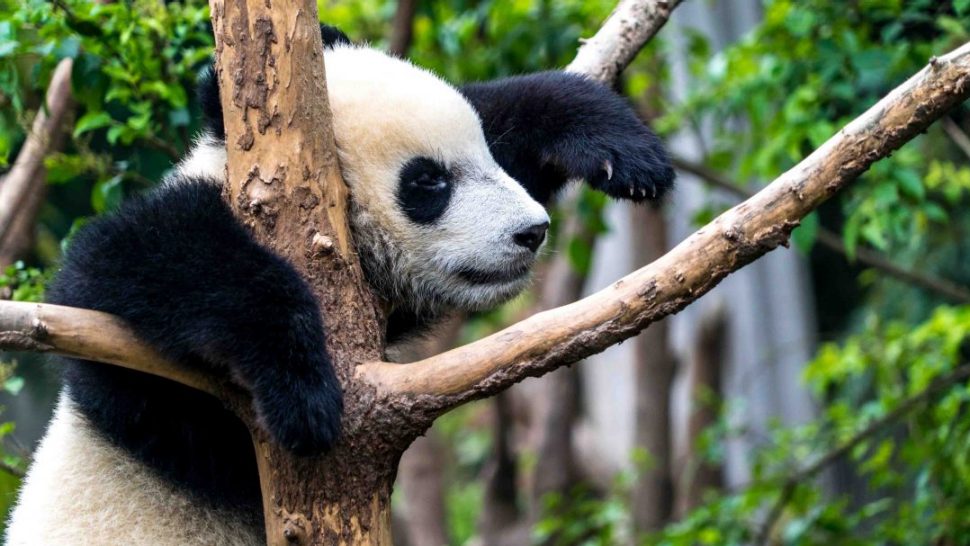6 unforgettable day trips to take in China
It’s easy to get caught up in the big cities when visiting China. But if you venture out of town, there are some unbelievable adventures that you can take in just a day. We explore six of the best day-trips to put on the itinerary for your China holiday.

Kunming Stone Forest - A forest of stone peaks
Kunming, otherwise known as the City of Eternal Spring, is the ideal base to explore the famous Stone Forest. Situated about 90km from the city, Shilin, meaning stone forest, got its name from the tall rocks that rise out of the ground like majestic trees made of stone. Over 270 million years of seismic activity, water and wind erosion have transformed the limestone into the incredible labyrinth it is today.
The Stone Forest is approximately 350 km2 of breathtaking ancient rock formations and natural wonders. While it’s easy to lose yourself for hours walking through these towering stalagmite rocks, you can comfortably explore the essentials in under two hours. The area is split into three main sections; Major Stone Forest, Lesser Stone Forest, and Naigu Forest. Each sector is known for its different landmarks and formations, as well as local legends.
There are also numerous lakes, waterfalls, caves and historic villages to explore in the wider Shilin National Scenic Area, such as the UNSCO World Heritage site Suogeyi Village. There’s even a geology museum near the entrance of the forest with everything you need to know about the stone formations. Also at the main entrance is a large sign-map and a store – it’s advised to take a photo of the sign or purchase a map before heading into the forest.
Keep in mind that some parts of the park can be quite steep and can even require some climbing. Be sure to wear comfortable shoes, pack plenty of water and get in early to avoid the crowds.
Mt Huangshan – Majestic yellow mountains
Another one of the most beautiful sites in China is the World Heritage-listed Yellow Mountains. They’re famous throughout Chinese artistic history and represented in many Chinese paintings. You may even recognise them as the Pandora landscapes from Avatar! Located approximately 400km from Shanghai, either a full day on public transport or half a day by car will get you there. Consequently, spending a night in Huangshan City will allow you enough time (at least a full day) to truly experience the Yellow Mountains, as it’s only about an hour’s drive away.
It’s important to mention that the Yellow Mountains are not actually yellow in colour. They get their name from the legendary Yellow Emperor (Huang Di), and are actually famous for the Four Wonders; the imaginatively-named Pines, oddly-shaped rocks or peaks, seas of cloud, and hot springs. There’s also another rarely seen wonder, Buddha’s light, which occurs when the elements are just right. When you’re between the sun and the clouds, and the ‘seas of cloud’ are below you, an optical illusion appears that looks like a halo surrounding your shadow.

There are countless trails to take up and around the mountain, but two of the most popular are via the Eastern Steps and the Western Steps; which take roughly four and six hours, respectively. If you want to experience the mountain, but hiking is not your idea of a relaxing day trip, there’s also many cable car and mini-bus options to get you to the top.
If you have the time, one of the most incredible experiences at the Yellow Mountains is seeing the morning sunrise, especially in winter. After spending a day exploring the mountain, there’s basic accommodation at the top of so you can spend the night and wake up to the one of the best views in China before trekking back down again.
Jiuzhaigou - A haven for nature lovers
There is a famed Chinese saying that goes, “just as one will find it worthless seeing a mountain after he has already visited the Yellow Mountain, he will also come to the conclusion that every lake is dull after he has seen the lakes in Jiuzhaigou”.
Arguably one of the most beautiful places in China, Jiuzhaigou National Park is known for its stunning crystal green and blue lakes, waterfalls and wildlife. Situated in the north of the Sichuan province, it’s approximately a 7-hour drive from Chengdu, or a short 1-hour flight. Jiuzhaigou (Nine Village Valley) can be experienced in a day, but it’s recommended to spend at least a night - especially if getting there by bus from Chengdu - to truly experience it.
When you purchase your ticket at the entrance, you can either get on one of the busses (they operate on a hop-on-hop-off system that the cost of your ticket covers) or you can explore on your own to escape the crowds. The park is quite easy to navigate, it’s very well signed and there are trails that can take you to more remote parts of the forest and the lakes. Keep in mind, however, that the park is over 720km2, so don’t stray too far. If you’re short on time, or you’d like to extend your day-visit into a camping trip, it’s recommended that you hire a guide. They can help you see as much as possible of the main attractions in a day, or put together a true insider’s experience for a multi-night stay in the park.
Before you embark on the journey out to Jiuzhaigou, be sure to check with the ticket office or one of the tour providers about what is open and available to the public. Unfortunately some trails and attractions have been closed since the 2017 earthquake.
Terracotta Army – An army of life-sized warriors
Discovered in the 1970s by workers drilling for a well, The Terracotta Army is one of the most important archaeological finds in Chinese history. The Terracotta Army was created by China’s first emperor, Qin Shi Huang, who constructed the army in 246 BC (2,220 years ago). Today the Terracotta Army is situated just outside Xi’an and is one of China’s major local and tourist attractions.
The World Heritage Site has thousands of life-sized warriors, chariots and terracotta horses, all buried with the First Emperor of China to protect him in the afterlife. Since its discovery, terracotta musicians, acrobats, concubines and birds have also been found in surrounding pits, and strange minute details have been discovered, such as that fact that every single soldier has a distinctly different face.
The museum is divided into four sections; the three Vaults, and the Exhibition Hall of the Bronze Chariots. Vault One is the largest and most impressive. Imagine an airplane hangar filled with 2,000 terracotta soldiers and horses. This was the first pit to be discovered and it’s believed to actually contain over 6,000 figures. Vaults Two and Three are still undergoing excavation and restoration, but are equally as breathtaking. Vault Two uncovered the mystery of the ancient army array, showing the different army units ready for battle. Vault Three is the smallest pit and represents the command post, with 68 ‘Officials’ figures. Approximately 8,000 figures in battle formation have been excavated at the site.

The Terracotta Museum is a huge complex, over 16,000 square meters, so there are many tours available and guided options to make the most of your day in Xi’an. To avoid the crowds, arrive early (doors open at 8:30am) and purchase tickets before you go.
Yangtze River - China’s longest river
At over 6,300kms long, the Yangtze River holds the impressive titles of being the longest river within a single country and the third longest river in the world. Flowing through more than nine provinces and with its basin alone covering almost 20% of China, while you can see it in a day trip, it really is one of the best excuses to jump on a cruise.
Due to its size, there are many cruise experiences available at various points across the country, varying from half-day to several weeks in length. One of the most popular routes is from Chongquing to the city of Yichang (many tour providers offer different options for this route including no. of nights, no. of stops and activity inclusions that will cater to any budget). If you imagine the river split into three areas, this would be the middle reach, which is home to the very scenic Three Gorges. Consequently, this is a great and very popular cruise option for visitors as there’s a variety of attractions throughout the journey and some of the most incredible scenery on the river.
Sailing through the natural wonder of the Three Gorges is sure to be the highlight of your cruise. The Xiling Gorge is the longest gorge and winds through spectacular canyons, the Wu Gorge sails through the stunning Twelve Peaks and the Qutang Gorge is lined with limestone and is the most dramatic of all three. If man-made magnificence if more your thing, the multi-record breaking Three Gorges Dam might take the cake. The 175m high structure was built as part of a water conservancy project to help with flood control, hydroelectric power production and to allow safer ship navigation through the river. It is thanks to the dam, and the rise in water level it created, that allows cruise ships to travel on glass-like waters through the beauty of the gorges.
As one of the most visited destinations in China, the best way to secure your place on a cruise is to book well in advance and not on public holidays. For the most enjoyable time on the Yangtze River, also avoid travelling during monsoon season.
Urumqi – Mummies and markets
Urumqi is the perfect city to use as a base when travelling through the Shanxi province, but also a must-see in itself. This Capital City is the largest in Western China and holds the record for the most remote major city in the world; 2,500 km from the nearest sea. Due to its geographical position between Kazakhstan and Mongolia, Urumqi has a unique mix of ethnic influences and is very rich in cultural history. Urumqi translates to ‘beautiful pasture’ in Mongolian and was also a major stop on the Silk Road during the Tang dynasty. There are two highly recommended landmarks to visit for a day trip in Urumqi - the Xinjiang Autonomous Regional Museum and the Xinjiang International Grand Bazaar.
The Xinjiang Museum has the largest collection of artefacts from the area, but the star attractions are recently discovered ancient Caucasian mummies. Thought to be one of the most significant archaeological finds of the century, the mysterious mummies are from 4,000 years ago, suggesting the earliest settlers of the region were Caucasian. There are also displays of Mummies from the Silk Road era and the 5th century AD, however the collection travels quite frequently to museums around the world, so be sure to check that they’re there (and the museum is open) before going.
One of the largest bazaars in the world is the Grand Bazaar, a grandiose market located in downtown Urumqi. It’s easy to get caught up in the excitement around the large main buildings; the Banquet and Performance Theatre and the No. 1 Sightseeing Tower are some of the best places to really soak up the sights of the Bazaar. But spend a full day and you can explore the countless stalls with clothes, spices, handmade crafts, artworks, gifts and beautiful trinkets in the surrounding lanes and alleys. If you’re not up for hours of shopping, stick to Food Square where you’ll find delicacies from over 50 Chinese nationalities. Just be mindful of pickpockets as they tend to hang around these busy parts of the bazaar.
In addition to the thousands of retail stores, the architectural landmarks, street art and entertainment allows you to experience and embrace a variety of cultures. The market is open all-day every day, and always draws a crowd.



